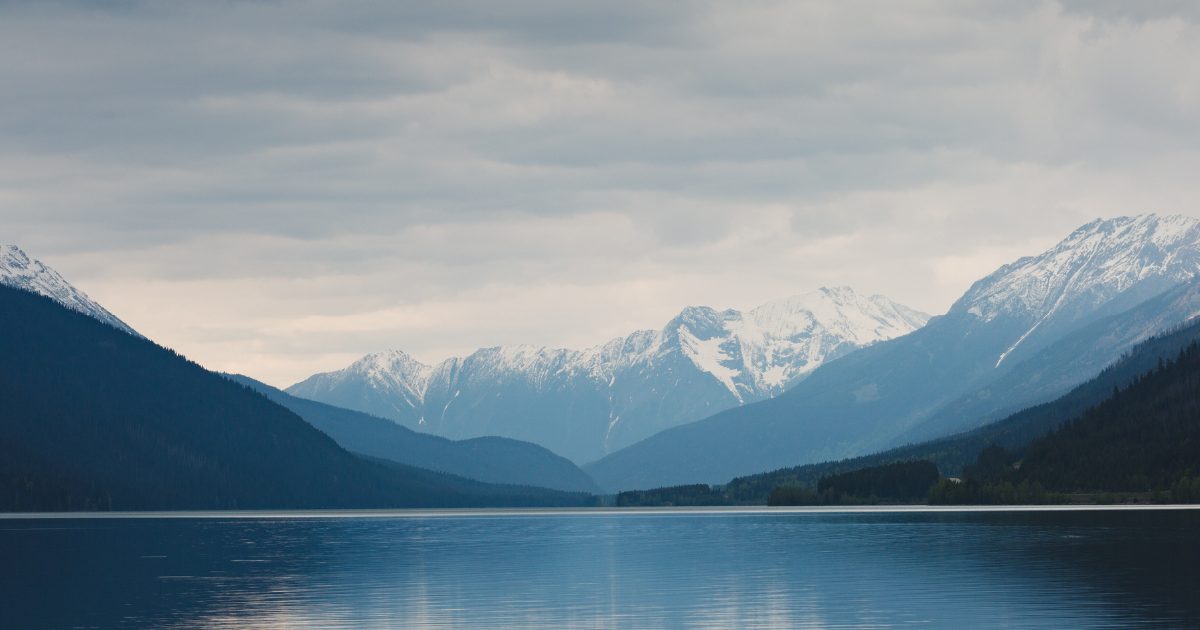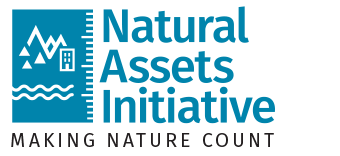Call for Expressions of Interest – Integrating First Nations’ Knowledge & Perspectives Natural Assets Inventory

Nature provides a wide range of services on which human well-being and survival depends. This includes storing carbon, controlling floods and stabilizing shorelines and slopes to providing clean air and water, food, fuel and medicines. Unfortunately, about 25% of all assessed plant and animal species are threatened by human actions, with a million species facing extinction, many within decades. In the face of these challenges and a rapidly changing climate, a range of methodologies and actions to protect, sustainably manage and restore natural or modified ecosystems is emerging; one of these is natural asset management (NAM).
For NAM to reach its potential in a Turtle Island/Canadian context, it must evolve to acknowledge and integrate inherent Indigenous rights and responsibilities in its methodologies and interweave, wherever appropriate and possible, Indigenous perspectives, knowledge and biocultural indicators. NAM delivers core local services and other positive outcomes, and also provides a platform to improve Indigenous/non-Indigenous community collaboration, leading to better decision-making for the health of our shared ecosystems.
In this context, the Municipal Natural Assets Initiative (MNAI) is seeking Expressions of Interest from First Nations and Local Governments in British Columbia that want to work together to develop a natural asset inventory that reflects, to the greatest possible extent, Western knowledge technical information and First Nations knowledge, worldviews and perspectives to measure the ecological services available within an agreed upon shared territory.
Lead by MNAI, participants will have the opportunity to:
-
Develop a natural features (land, water and air) inventory within a defined ecosystem, using already existing data sets that are shared by project partners
- The inventory will include a register, dashboard condition assessment, risk identification and final report
- Meaningfully contribute to the documentation process and lessons of the project that may be applicable elsewhere on Turtle Island/Canada
- Document key points of intersection between NAM and First Nations knowledge, world views and perspectives for a specific ecosystem
Develop a shared strategy and next steps on how to use a shared natural asset inventory to implement innovative watershed financing solutions to sustainably fund annual operational and capital expenditures to protect, conserve and restore lands, waters and air in a defined shared territory
Natural Asset Inventory 101
At a basic level, natural asset inventories have included:
- A list of natural features that provide services to the community, e.g., wetland, streams, forests, wildlife and sacred and medicine plants
- An understanding of what services those natural features provide in the community
- The geographic boundaries of the natural features and;
- The people, governance processes and structures that support the on-going monitoring, maintenance, restoration and enhancement of these natural features
- An understanding of the present condition the natural features are in and the risks (both natural and human-caused) they may face
Inventories help communities build an understanding of the natural assets they rely on, the extent of that reliance, and, importantly, provides the foundation for all other aspects of natural asset management including current valuations, modelling, planning, implementation and available financing opportunities to help fund sustainable maintenance, restoration and monitoring activities.
There is currently a national standard being developed to ensure that natural inventories can be done consistently, so they are comparable and replicable. This project, however, will seek to surpass this standard by meaningfully integrating Indigenous rights and responsibilities and United Nations Declaration of Rights of Indigenous Peoples (UNDRIP) considerations from the beginning and throughout the process.
Project Details
MNAI will assess expressions of interest according to a variety of factors including geographic distribution and the extent to which the First Nations and Local Government partners demonstrate a commitment to pursuing natural asset management and a collaborative approach to stewarding nature within a defined ecosystem or watershed.
Eligibility
We encourage applications from groupings of First Nation and Local Governments that are conducting inventory projects in a single /site/territory/sensitive ecosystem/potential protected areas
Cost
Local Governments and First Nations are required to contribute $27,500 (or approximately 50% of inventory project costs) per site. Local governments and First Nations are welcome to divide costs as they see fit between them and/or seek outside funding to defray them. The remainder of the funding is generously provided by the BC Real Estate Foundation.
Interested?
We encourage all First Nation and Local Governments that want to collaborate on a watershed/ecosystem level natural features inventory to apply. If the cost of this project is a barrier – please still consider applying. A commitment to collaborating and sharing data to create ecosystem/watershed-level natural asset inventories is the primary objective of this project and MNAI is committed to finding the funding required to make this happen when there is political will.
What will First Nation and Local Government partners get out of this?
–
Selected Local Governments and First Nation partners should anticipate the following activities and outputs.
Activity 1: Following receipt of EOI’s and initial meetings/interview with project partners to confirm participation, MNAI will coordinate a launch webinar with all the First Nation and Local Governments in the same ecosystem. The initial launch meeting will allow MNAI to explain the project process, overarching methodology, scope, and other topics that are relevant to everyone.
Review background tools and information, including a natural asset management data needs checklist, and requests that each First Nation and Local Government partners complete the checklist and provide MNAI with the data within a time frame agreed upon by project partners for receiving the data request list from MNAI.
Output: Brief documentation of webinar discussions and questions.
Output: MNAI receives data from First Nation and Local Government partners
*Timeframe to complete this activity may vary pending project partners status of data collection methodologies and existing/known/unknown data gaps. MNAI is committed to meeting each partner where they are currently with respect to natural features data and developing a plan, together to fill any data gaps through the NAM process. **
Activity 2: MNAI conducts a readiness scale assessment with each First Nation and Local Government partner to determine their state of engineering asset management maturity and documents their context and interests in natural asset management. A new innovative assessment will be applied in this activity to determine the extent to which First Nation and Local Government partners collaborate on stewardship and on-going maintenance of natural features within defined project ecosystem. This will also include a facilitated discussion between First Nation and Local Government partners on what would be needed to continue collaborating following project completion to execute on-going maintenance, restoration and monitoring activities.
Output: Completed readiness assessment, discussion results and potential collaborative governance/co-management strategies that could be applied by First Nations and Local Governments to ensure long-term collaborative stewardship of ecosystem.
Activity 3: MNAI reviews data and responds to data gaps to the extent possible. MNAI will develop a natural asset inventory, condition assessment (present state), and risk identification. MNAI will also provide support to First Nations and Local Government partners to help them fill in data gaps.
Outputs: a natural asset inventory and dashboard that includes the condition assessment and, based on data the First Nations and Local Governments will have provided, a list of identified risks and the assets they apply to.
Activity 4: MNAI conducts a webinar with each First Nation/Local Government partner to tour the inventory and dashboard of natural assets, explain its maintenance, and discuss potential future next steps in the natural asset management process.
Outputs: Brief documentation of webinar discussions and questions.
Activity 5: MNAI develops a brief summary report that also identifies potential next steps for the First Nations and Local Government to move from a preliminary inventory to a full natural asset management project, including valuation, and process for on-going co-management of an ecosystem/watershed.
Output: Roadmap
Applying a Two-Eyed Seeing and Ethical Space approach to Natural Asset Management
Etuaptmumk is the Mi’kmaw word for Two-Eyed Seeing — this concept was brought to the forefront of Integrative Science by Mi’kmaw Elder Albert Marshall in the fall of 2004. This approach is often described as a way of learning to see from one eye with the strengths of Indigenous knowledge and ways of knowing and from other eye with the strengths of Western knowledges and ways of knowing and then learning to use both these eyes together, for the benefit of all.
To apply a two-eyed seeing approach the partners in this project must be committed to creating an Ethical Space. Ethical Space was coined by the Indigenous philosopher, Willie Ermine, from the Sturgeon Lake First Nation. The ethical space of engagement is a framework that examines the diversity and positioning of Indigenous peoples and Western society. In the 2018 report, We Rise Together, the Indigenous Circle of Experts (ICA) described ethical space as “a venue for collaboration and advice, sharing and cross-validation (where one side validated the other’s decisions)”. The focus on ethical space is on creating a place for knowledge systems to interact with mutual respect, kindness and generosity.
Until very recently, MNAI’s inventory was not designed to specifically include or align with Indigenous worldviews, knowledge and perspectives. However, there has been engagement in Manitoba between the Winnipeg Metropolitan Region, its First Nations advisors, and Treaty 1 First Nations Chiefs focused on how First Nations worldviews, knowledge and perspectives might be interwoven into an existing MNAI inventory or new ones, as well as natural asset management more generally. MNAI has been party to this engagement, which has yielded important initial two-eyed seeing insights related to natural assets management concepts and terminology, and aspects of the inventory process, including condition assessment and the characterization of agricultural land.
Inventories developed as a result of this call for expressions of interest are an opportunity to build on the work happening in Manitoba, determine its applicability in BC, develop meaningful natural assets inventories and ultimately, lay a foundation for a proactive understanding for how natural assets management can uphold the United Nations Declaration on the Rights of Indigenous Peoples (UNDRIP).


